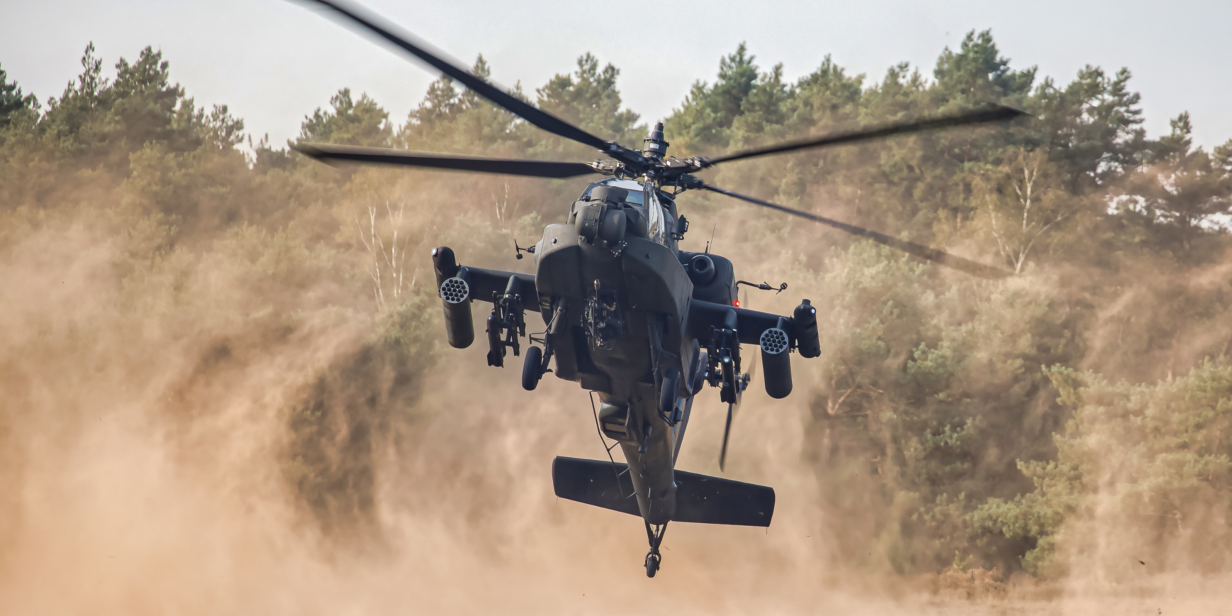
White Papers
Torque sensors form an integral part of modern aerospace control systems, there are several established key applications and new emerging areas where torque sensing can improve aircraft performance and safety.

In variable-pitch propellor systems such as helicopters, the amount of torque at a given rotational speed of the engine can vary significantly, this is due to the ability of helicopters to adjust the angle of attack on the blades, increasing or decreasing the amount of lift at a given rotational speed. Both the main lift rotor and the tail rotor have variable pitch control, to maintain a steady hovering position the torque created by the rotation of the main rotor to generate lift, which if unopposed would cause the helicopter to spin around the axis of rotation of the main rotor, must be opposed by the torque created by the tail rotor thrust. As the helicopter transitions to forward motion the required reaction torque reduces at the tail rotor, balancing this system is essential to allow the helicopter to achieve stable flight. Knowing the exact amount of torque being demanded by the rotating blades is not only required to meet safety certification regulations but is essential to allow the pilot to control the aircraft.
Historically a range of measurement methods have been used, including basic mechanical systems on older aircraft, with the introduction of electronic controls measurement has been delivered with torque sensors such as inductive displacement sensors and strain gauge systems. Transenses’ Surface Acoustic Wave or SAW sensor technology is growing in popularity due to its ability to accurately measure torque in aircraft propulsion systems and other airframe applications with a robust, reliable system. The ability of SAW sensing to directly measure torque or force in stiffer components means that torsion shaft systems required by conventional sensors can be eliminated, creating a much simpler and more compact sensing system.
Whilst torque sensing is common on helicopter main rotors, another potential application is the tail rotor drive system, where knowing the exact level of torque can help to further improve flight control and detect faults. Where conventional torque sensors are not compact enough to be mounted in this location Transense SAW technology can be integrated into this challenging location. This enables the effect of drive shaft wind-up to be offset in the control and for more automated control of the helicopter anti-torque system.
In fixed-wing aircraft torque sensors are also used. In modern turboprop engines, significant packaging volume and weight can be saved by moving from conventional torque sensors to SAW technology. The SAW torque sensor can be embedded into the engine or gearbox directly, rather than a stand-alone sensor assembly, and as no torsion shaft is required the whole assembly can be significantly reduced in size. A saving of between 5-10kg is possible in a typical system design.
What does the future hold?
In future hybrid and electric propulsion systems torque sensing will be needed for functional safety to provide a dissimilar method of verifying the estimated torque values from the electric motor control systems. Leading aerospace companies are turning to SAW technology because, in addition to its other benefits, it can operate closely coupled to electric motors.
Outside of the propulsion system, as aircraft adopt more electronic control systems, fly-by-wire and electrified actuation, SAW sensor technology can help to improve both control and functional safety, due to its ability to accurately and reliably measure torques, forces, and temperature in safety-critical systems, with compact packaging in locations where it is not possible to install other sensors. This includes aircraft flight control actuation systems, landing gear, and propulsion systems.